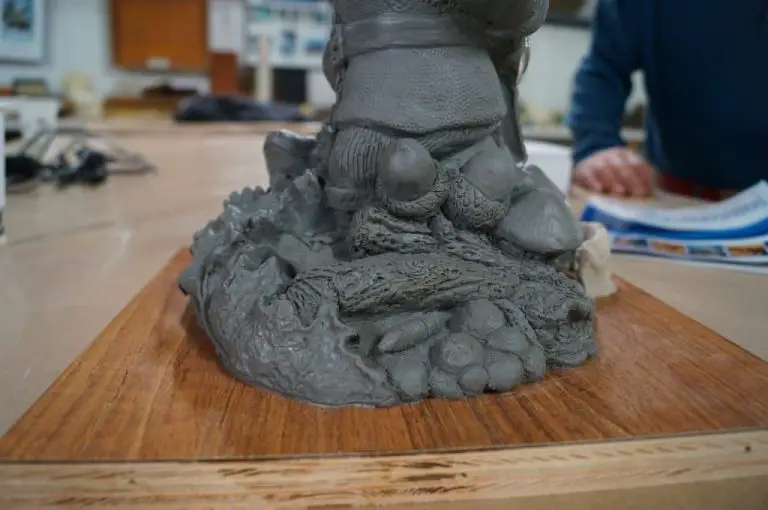How To Build A Clay Brick Oven?
Clay brick ovens have been used for centuries to bake artisanal breads and pizzas. The high heat retention and steam created within a brick oven allows for an authentic wood-fired cooking experience right in your own backyard.
Building your own brick oven is a fun and fulfilling DIY project. With some planning, basic masonry skills, and patience, you can construct an efficient and beautiful oven made entirely from brick and mortar.
This guide will take you through the end-to-end process of constructing a clay brick oven, including the foundation, walls, chimney, insulation, and finishing touches. We’ll cover proper oven dimensions, materials needed, and steps for each phase of construction.
When complete, you’ll have a fully functional brick oven ready for baking up tasty homemade pizzas and breads your family and friends will love.
Planning and Design
The first step in building a clay brick oven is proper planning and design. Here are some key considerations:
Ideal Location
Choose a location for the oven that is outdoors, away from trees and shrubs, and has good ventilation. The oven should be placed on a non-flammable surface like concrete or bricks. Make sure there is enough space around the oven to access it from all sides.
Basic Dimensions
A small home oven can be around 3-4 feet wide and 2-3 feet deep. Larger ovens may be 5-6 feet wide. The oven dome should be around 2 feet high. Determine the dimensions based on your needs and space available.
Single vs Double Chamber
Single chamber ovens have one chamber that is used for both fire and cooking. Double chamber ovens separate the fire and food, allowing more control over cooking temperature. Decide which design fits your needs.
Materials
You will need clay bricks, sand, clay slip, firebricks for the floor, insulation like perlite, and tools for shaping and cutting bricks. Make sure to get high-heat mortar for any mortared joints.
Foundation
The foundation is the most important part of the brick oven because it determines the stability and structural integrity of the entire oven. A proper foundation prevents the oven from cracking or collapsing over time due to the weight of the bricks and repeated heating and cooling cycles.
There are two main options for building the foundation – a gravel base or a concrete slab. A gravel foundation is the traditional method used for brick ovens. The gravel should be compacted down, well-draining, and at least 12 inches deep. Compacting the gravel properly prevents settling issues. The main drawback of a gravel base is that over time, it can shift or erode.
A concrete slab foundation provides maximum stability for a brick oven. The slab should be at least 4-6 inches thick and reinforced with rebar or wire mesh. The concrete prevents any shifting of the foundation and provides a perfectly level surface on which to build the oven. The downside is that a concrete slab is more complex and labor-intensive to construct. Overall, a concrete foundation is the best option for guaranteeing a stable base for a brick oven.
Oven Floor
The oven floor is one of the most important parts of your DIY brick oven build. It must be durable, able to withstand high temperatures, and sloped properly for airflow. When selecting materials, firebricks or refractory bricks are ideal. They are specifically designed to endure intense heat. Regular clay bricks may crack under the stress of baking temperatures.
For the mortar that bonds the bricks, use a heat-resistant mixture. Many homemade oven builders recommend a recipe of 3 parts sand, 1 part Portland cement, and 1 part lime. This creates a strong seal that won’t fail. Be sure to mix the mortar thoroughly before use.
As you lay the floor bricks, create a gradual slope from back to front. Aim for at least a 30 degree incline, with the highest point at the oven’s rear. This allows heat to flow naturally toward the mouth opening. Check with a level often to ensure the slant is correct. A poorly sloped floor can lead to hot and cold spots.
Oven Walls
The oven walls are built up with clay bricks and need to be strong enough to support the structure. There are a few key considerations when constructing the oven walls:
Brick Pattern and Bonding
Use an overlapping brick pattern, such as running bond or English bond, for the strongest structure. Stagger the vertical joints between courses and make sure bricks overlap by at least 25%. Unless you’re very experienced, avoid decorative bond patterns as they can compromise stability.
Doorway Framing
The oven doorway is a weak point and needs an arched brick lintel across the top to properly distribute weight. Frame out the doorway with 2×4 lumber. Make sure the top of the frame rises at least 6 inches above the doorway top. Use pieces of 1/4 or 1/2 inch plywood cut into arch shapes to support the bricks as you build the arch.
Chimney Planning
Consider where the chimney will exit through the oven walls. It should vent high above the oven ceiling. Mark the location on the walls and plan for a framed opening at least 8×12 inches, framed with a wood lintel across the top.
Oven Arch
The oven arch is a critical structural component that helps contain and distribute heat. There are several common arch shapes used in brick ovens, each with their own benefits:
Roman arch – This semicircular shape provides strength while allowing heat to circulate. It requires less bricks and formwork than other designs.
Gothic arch – The pointed shape helps heat rise into the dome, while putting less sideways pressure on the walls. But it uses more bricks than a Roman arch.
Catenary arch – This upside down U shape distributes weight evenly across the entire curve. It provides stability but can be tricky to construct.
Building the arch requires sturdy wooden formwork to hold the bricks in place while the mortar sets. Cut arch shapes out of plywood or lumber. Use multiple angled supports and secure the form tightly.
Start laying bricks at the base, using firebricks for the inside surface. Maintain even mortar joints and mind the curvature as you build upwards. Tap bricks gently into place and keep symmetry on both sides. Let mortar dry fully before removing formwork. The arch should be self-supporting once complete.
Having a properly constructed oven arch is crucial for safety and performance. Take time to build it right, using quality firebricks and mortar that can withstand high temperatures.
Oven Door
The oven door is a critical component that regulates airflow and retains heat. Determining the right size for the door opening takes careful planning.
For a residential backyard oven, the opening typically ranges from 16-18 inches wide and 12-14 inches tall. This provides enough space to load pizzas and bread, while minimizing heat loss when the door is open.
Construct the door using thick cast iron or soapstone. Cast iron offers durability, while soapstone provides superior heat retention. The material should be at least 1.5-2 inches thick to prevent the outside from getting too hot.
Attach sturdy metal hinges to the door that can withstand repeated opening and closing. The top of the door should have a spring or counterweight system to keep it balanced. For a tight seal, install fiberglass rope gaskets around the door opening and edges.
Take care to properly install the door, as any gaps or cracks will impact airflow and allow valuable heat to escape from the oven.
Insulating the Oven
Insulation is a crucial step in building a clay brick oven. The insulation helps retain heat and improves cooking efficiency. Without proper insulation, the oven will struggle to reach and maintain high temperatures.
There are two main insulation materials used in brick ovens – perlite and vermiculite. Both are lightweight and provide excellent insulation value. Perlite is made from volcanic glass and tends to be more affordable. Vermiculite is a mineral that expands when heated. It’s a bit pricier but offers better insulation.
To insulate the oven, start by mixing the perlite or vermiculite with a binder like clay slip or fire clay. You want aratio of about 5 parts insulation to 1 part binder. Mix it into a wet, packable consistency. Press the insulation mix firmly into the gaps between the firebricks, filling every crack and crevice.
Aim for at least 4-6 inches of insulation on the oven walls and 8-12 inches on the oven ceiling. The thicker the insulation, the better it will retain heat. Just be sure not to block the flue or chimney when insulating the ceiling.
Let the insulation fully dry for at least 24 hours before firing up the oven for the first time. The insulation will further solidify from the oven heat. Proper insulation allows your brick oven to cook efficiently at high temperatures for the perfect wood-fired pizza.
Chimney
The chimney is a crucial component of the outdoor pizza oven as it allows smoke and heat to escape. There are several key factors to consider when constructing the chimney:
Chimney Height and Width
The chimney should extend at least 4-5 feet above the highest point of the oven dome. This allows for proper draft to pull smoke and heat up and out. The interior width of the chimney should be around 8 inches, providing adequate draft without being too large.
Stainless Steel vs. Clay Flue
Stainless steel is the preferred material for chimney flues as it is durable and can withstand high temperatures. Clay flues are less expensive but can eventually crack under prolonged heat exposure. Stainless steel flues are easier to clean and maintain over time.
Cap Installation
A cap should be installed on top of the chimney to prevent rain and debris from entering, while still allowing smoke to exit. The cap can be stainless steel or clay and should overhang the flue by 1-2 inches on all sides.
Finishing Touches
Once construction of your clay brick oven is complete, there are still a few finishing steps to take before your first fire.
Curing and Sealing
Allow adequate time for the clay brick and mortar to cure before lighting your first fire. This allows moisture to evaporate slowly from the materials. Rushing this step can cause cracks or damage. Plan for at least 4 weeks of curing time.
After curing, apply a heat-resistant sealer or paint to the outside of the oven. This protects the clay from weathering and seals any pores. Use a product rated for high temperatures.
Accessories
Add any desired accessories like peel holders, utensil racks, thermometers and more before the first fire. Mount thermometers to monitor cooking chamber temperature.
First Firing
For the first firing, start small to gradually heat and season the oven. Build a small fire in the back and maintain 300-400F temperatures for several hours before allowing it to go out naturally. Repeat this 2-3 times before cooking. This slowly dries out moisture and sets the clay brick, readying your oven for many years of cooking!



